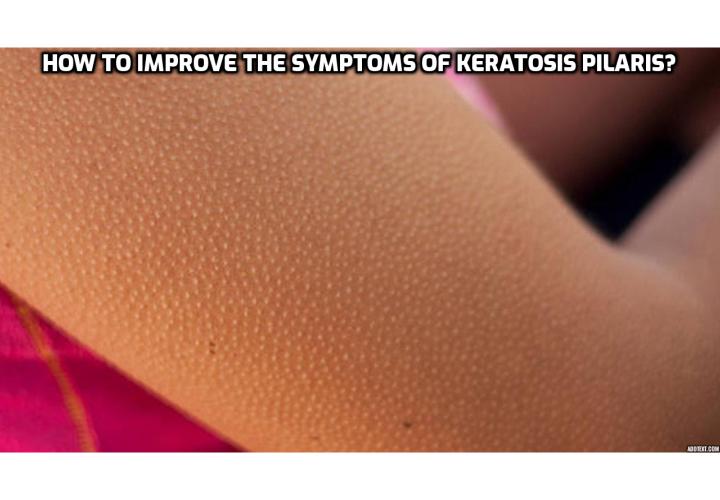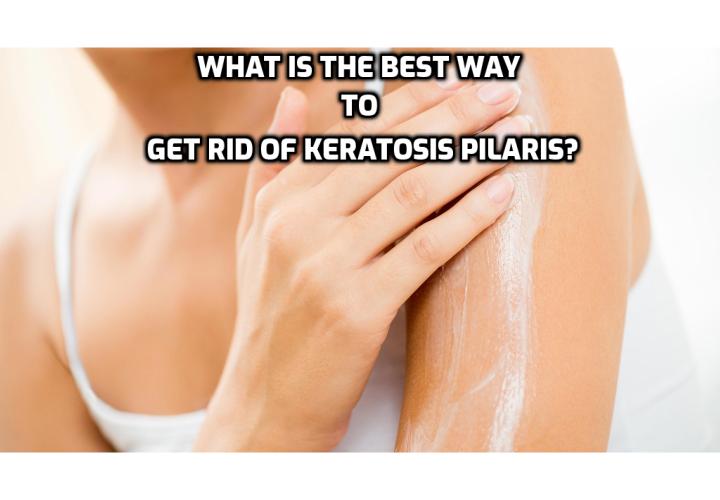Treating Keratosis Pilaris - The Psychological
Effects of Keratosis Pilaris
Keratosis pilaris is a common skin condition that
affects many adults, adolescents, and children. The disorder is caused by the
buildup of keratin, a protective skin protein. This buildup creates small plugs
in your hair follicles, creating small, rough bumps of skin in patches along
the upper arms, thighs, and buttocks. Although keratosis pilaris is not medically concerning, it
is visually unattractive and can lead to psychological complications for some
patients.
Approximately
50% to 80% of all adolescents are affected by keratosis pilaris, as well as nearly 40% of all
adults. Children 10 years old and younger are also more likely to experience
this condition as they develop.
Furthermore,
keratosis pilaris affects a high number of women
during pregnancy or after childbirth, and it is especially common among both
males and females during puberty. The condition is harmless and not infectious
but may create emotional discomfort.
According
to the American Academy of Dermatology, major depression is a frequent consequence of chronic
skin disorders such as keratosis pilaris and acne. A higher risk of other
psychosocial side effects-such as anger, social withdrawal, frustration, and
low self-confidence-is also associated with keratosis pilaris. Additionally, two out of five
children with a cosmetic skin issue have some form of psychosocial impairment.
Research
also suggests that individuals with skin disorders have a higher risk of
suicide and suicidal thoughts: a West-African study found that patients with
cosmetic skin issues had an increased risk of low self-esteem, depression, and suicide.
If
you are suffering from keratosis pilaris or a related skin condition, see
your doctor or a dermatologist to discuss potential treatments like using a
rich moisturizer daily or installing a humidifier in your home. He or she may
also recommend a corticosteroid cream to reduce redness and roughness of your
skin.
If
your symptoms are prompting you to experience effects like psychological
distress, you should consider seeing a psychologist or counsellor to address
your skin-related anxieties as well. To ensure that you receive effective
treatment and can experience long-term wellbeing, it is important to address
both the physical manifestations of keratosis pilaris as well as the mental-health
complications.
The Risks
Associated with Treating Keratosis Pilaris Using Medical Science
Keratosis pilaris is a widespread and common skin
disorder affecting nearly 40% of adults and up to 80% of adolescents. This
condition occurs when a protective skin protein called keratin plugs hair
follicles. Rough, bumpy patches of skin result from this protein blockage,
which can prompt irritation, redness, and itching.
Although
at-home remedies like moisturizing lotions may alleviate some symptoms, there
is currently no known cure for keratosis pilaris. In fact, certain medical
treatments for keratosis pilaris can actually increase your risk of bad side
effects.
More-intensive
medical treatments such as prescription corticosteroid creams or topical
retinoids are sometimes suggested to soothe skin and reduce redness. However,
these forms of treatment for keratosis pilaris are associated with minor risks.
Retinoid
creams like treinoin and tazarotene, for example, can create unpleasant skin irritations,
such as severe dryness, redness, and peeling. Additionally, doctors advise that
pregnant or nursing women delay any topical retinoid therapy or pursue an
alternative treatment, as it can pose risks to infants.
Laser
therapy is another more-intensive medical treatment for keratosis pilaris. If
your symptoms involve severe redness and inflammation, your doctor may suggest
that you pursue laser therapy. This form of treatment uses intense bursts of
light over certain areas of skin, but can also involve risks such as infection,
bleeding, scarring, and skin-color changes.
Additionally,
laser therapies have not been shown to cure keratosis pilaris. Because multiple
laser-treatment sessions are required for this method to be effective, the risk
of nasty side effects can be higher than the risks involved in other forms of
treatment.
In-office
treatments like chemical peels, dermabrasion, and photodynamic therapy are
sometimes suggested to treat this condition if it persists. These methods may
be moderately effective when performed by a physician, but can lead to
scarring, redness, swelling, bleeding, acne, changes in skin color, and infection. These
procedures also involve preparatory care plans that can last for two to four
weeks, which may be inconvenient or challenging to maintain.
Although medical science may be helpful in treating keratosis
pilaris, it should not be relied upon exclusively. For milder and alternative
methods, speak to your doctor about at-home and over-the-counter remedies.
For more ideas on treating keratosis pilaris, watch this
video - Keratosis Pilaris Treatment | Bumps On Skin"Chicken Skin" | Vivienne Fung
This post is from the Keratosis Pilaris Remedy
program created by Alison White. Keratosis
Pilaris Remedy program is a step by step natural system through which
you can achieve a smoother and clearer skin in the shortest possible time. It
comes with a confidence-boosting skin cleanse that will help you in getting rid
of the Keratosis Pilaris condition.
You
will also get a recipe for a home-made face scrub with this product that is not
only very affordable to make, but also offer much more benefits as compared to
the expensive products available in the market.
The
author (Alison White) has also included her special Keratosis Pilaris diet
plan that includes some basic foods and make your skin to reborn and glow up
like your younger days.
Furthermore,
you will get the important information about the special ingredients that you
should consider while buying any skin product. These ingredients can be proved
very useful in eliminating the Keratosis Pilaris permanently.
To
find out more about this program, visit Keratosis
Pilaris Remedy Forever




